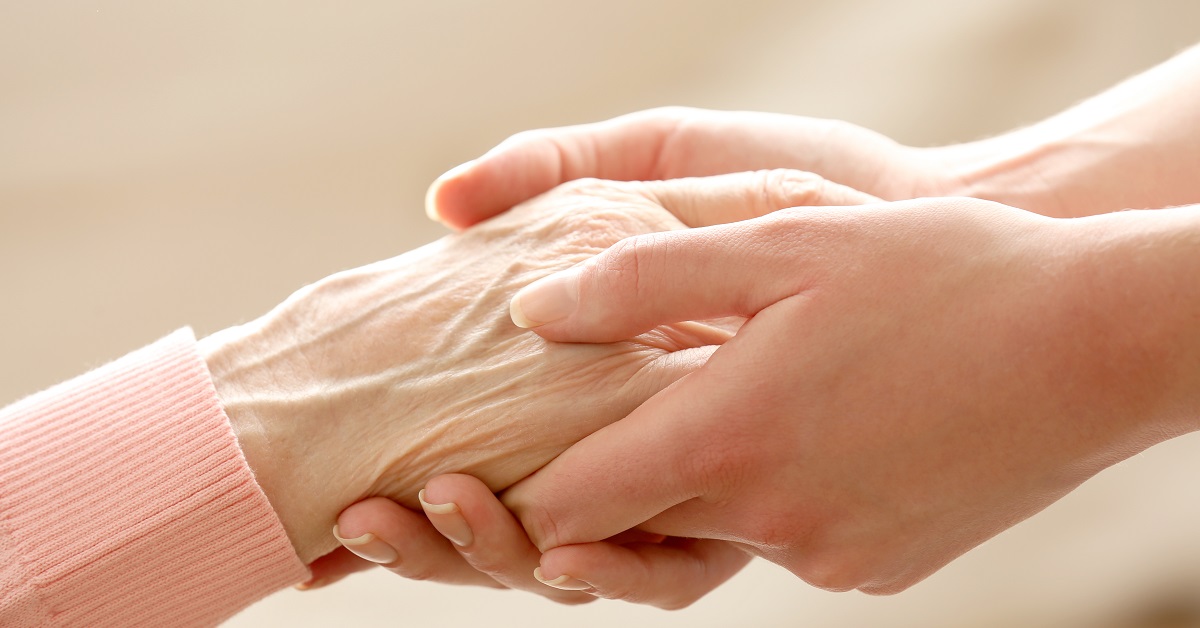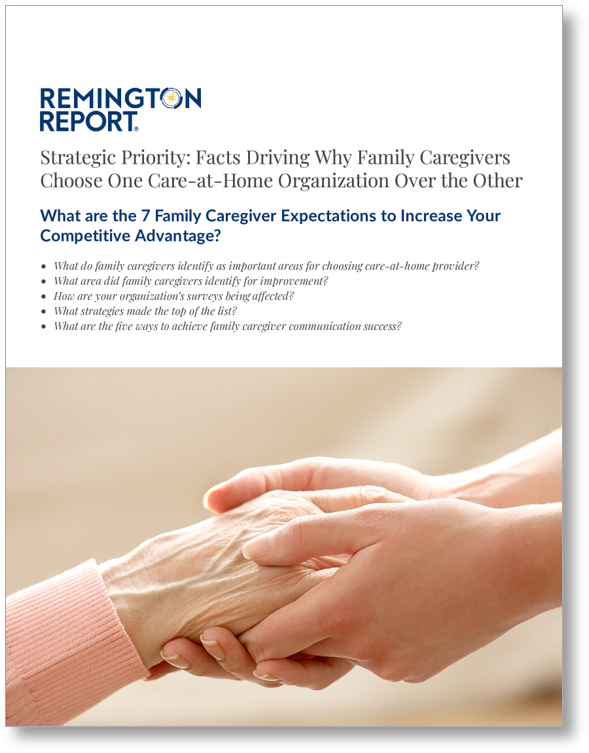Multiple Solutions to Improve Outcomes, Patient Engagement, and Deeper Conversations
- 7 Patient Engagement Solutions Clinicians Want to Better Communicate with Patients and Their Families
- Challenges and Gaps in Patient Communications and Engagement Today
- 3 Ways Enhanced Communications Improves Patient Engagement
- 4 Ideas to Increase Patient Engagement Today
- 7 Strategies to Meet the Growing Communication Demands of Your Business
What are the 7 Family Caregiver Expectations to Increase Your Competitive Advantage?
- What do family caregivers identify as important areas for choosing care-at-home provider?
- What area did family caregivers identify for improvement?
- How are your organization’s surveys being affected?
- What strategies made the top of the list?
- What are the five ways to achieve family caregiver communication success?
8 Out of 10 Family Caregivers Would Choose One Hospice Provider Over Another Based on the Ability to Communicate Effectively in Real-Time
How Do Family Caregiver Needs Align with Today’s Organizations?
Family Caregiver
A Porter Research recently conducted a groundbreaking research study of 300 family caregivers who had a loved one under hospice care within the past 12 months regarding their experiences with hospice provider communication. The results indicate that most hospice providers are using outdated communication mechanisms, such as phone and insecure text messages, to connect with family caregivers outside of the in-person visit.
Hospice Leaders
100 hospice leaders responded to a recent Porter Research study about the ability to communicate with family caregivers. 79% report that they still use the telephone as their primary means of communicating with patients (outside of face-to-face visits).
What is the Most Popular Way Organizations Communicate with Patients Outside Face-to-Face Visits Today?
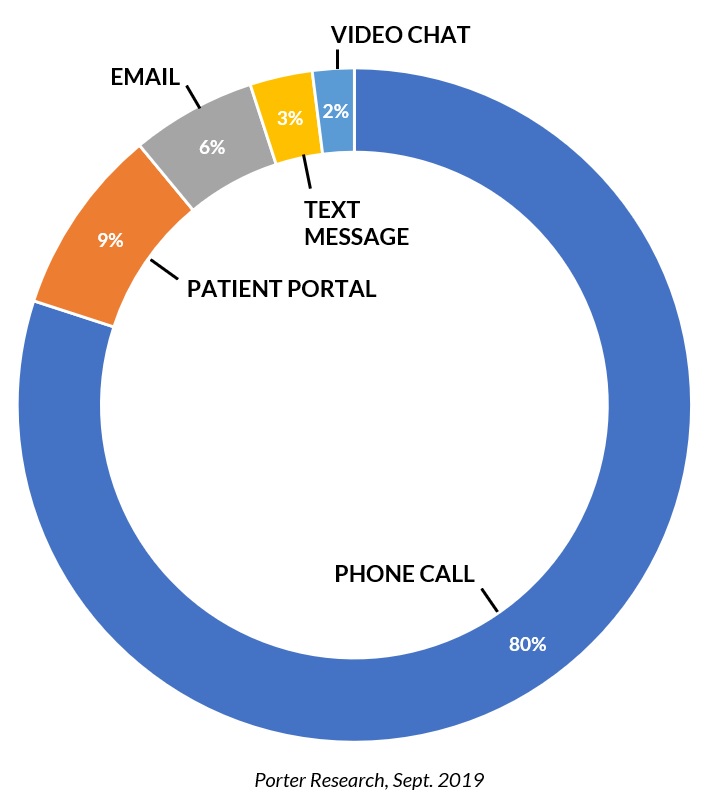
Most hospices are still using unsecure, outdated communication tools to collaborate with patients, family members and each other.
7 Preferences Patients Say Can Improve Communications
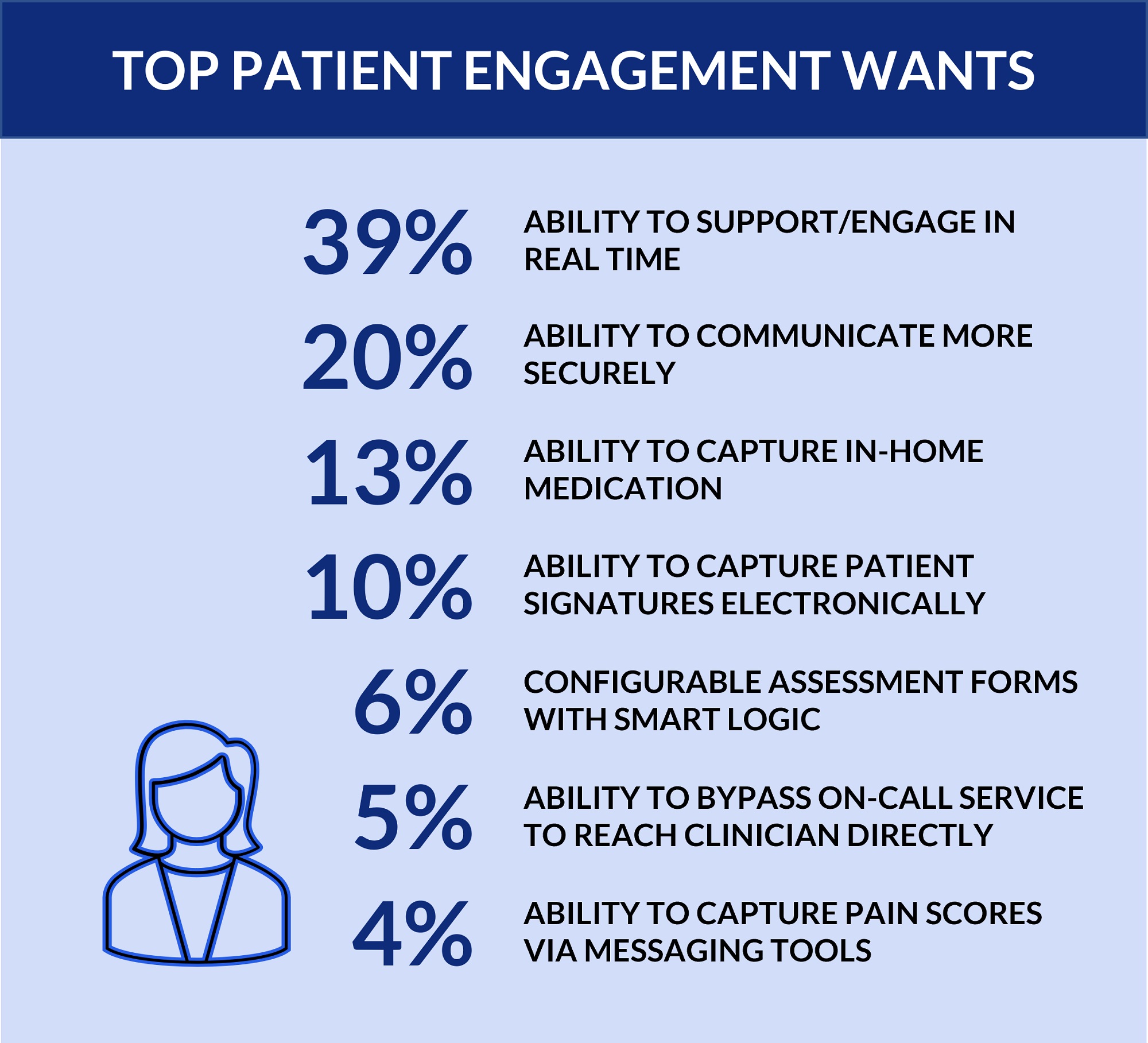
A must-read e-book for all care-at-home organizations about patient and caregiver satisfaction: “12 Secrets to Patient and Family Caregiver Satisfaction in Home Health, Hospice, and Palliative Care.”
How Does the Gap Between What Family Caregivers Want and How Today’s Hospice Providers Communicate Impact Patient Satisfaction?
Across all methods of communication, over 90% of family caregivers indicated that the method of communication influenced their overall satisfaction scores. If family caregivers are not receiving immediate responses, are forced to play phone tag and send several communications to make their loved one comfortable during one of the most stressful times in life, they will respond with low satisfaction scores.
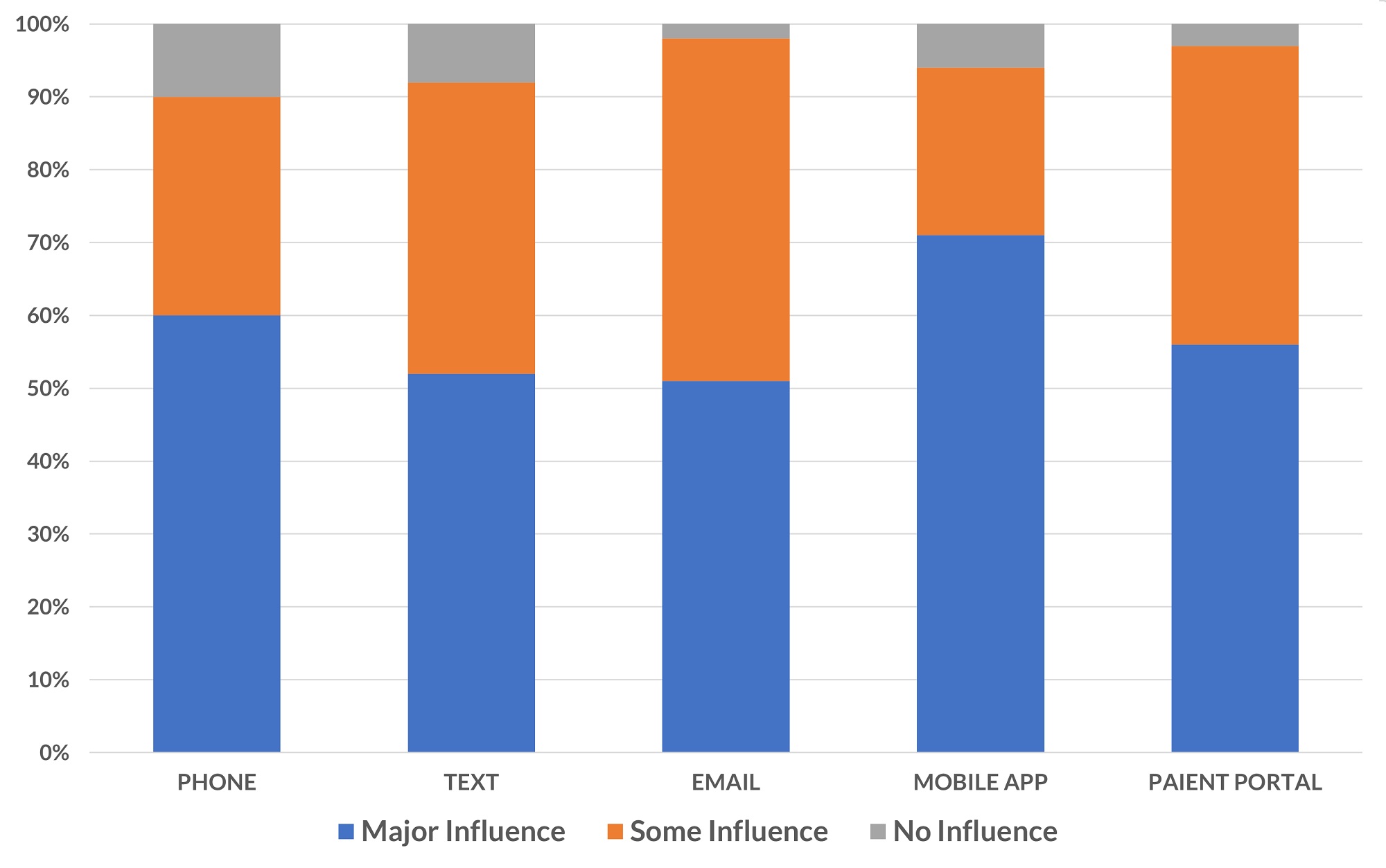
Family caregivers that receive timely communication in their preferred mode give higher hospice satisfaction scores.
Read more details about family and caregiver communication preferences: “New Study Reveals Care Team and Family Member Connectivity Gaps in Hospice.”
How Does Poor Communication Issues Impact CAHPS Surveys?
On average. only 43% of family caregivers claimed to be “very satisfied” with their hospice providers on the four CAHPS survey questions most impacted by communication:
- communication with family,
- training family to care for patient,
- getting timely help, and
- emotional and spiritual support, with only a slight variance in response for each question.
The majority – 57% – indicated that providers have room for improvement (responses that included “somewhat satisfied” to “very unsatisfied”). The biggest need for improvement is delivering timely access to help, which should be a red flag for hospice providers that want to avoid unnecessary ER visits and hospitalizations.
Family Caregiver Satisfaction: CAHPS Survey Questions
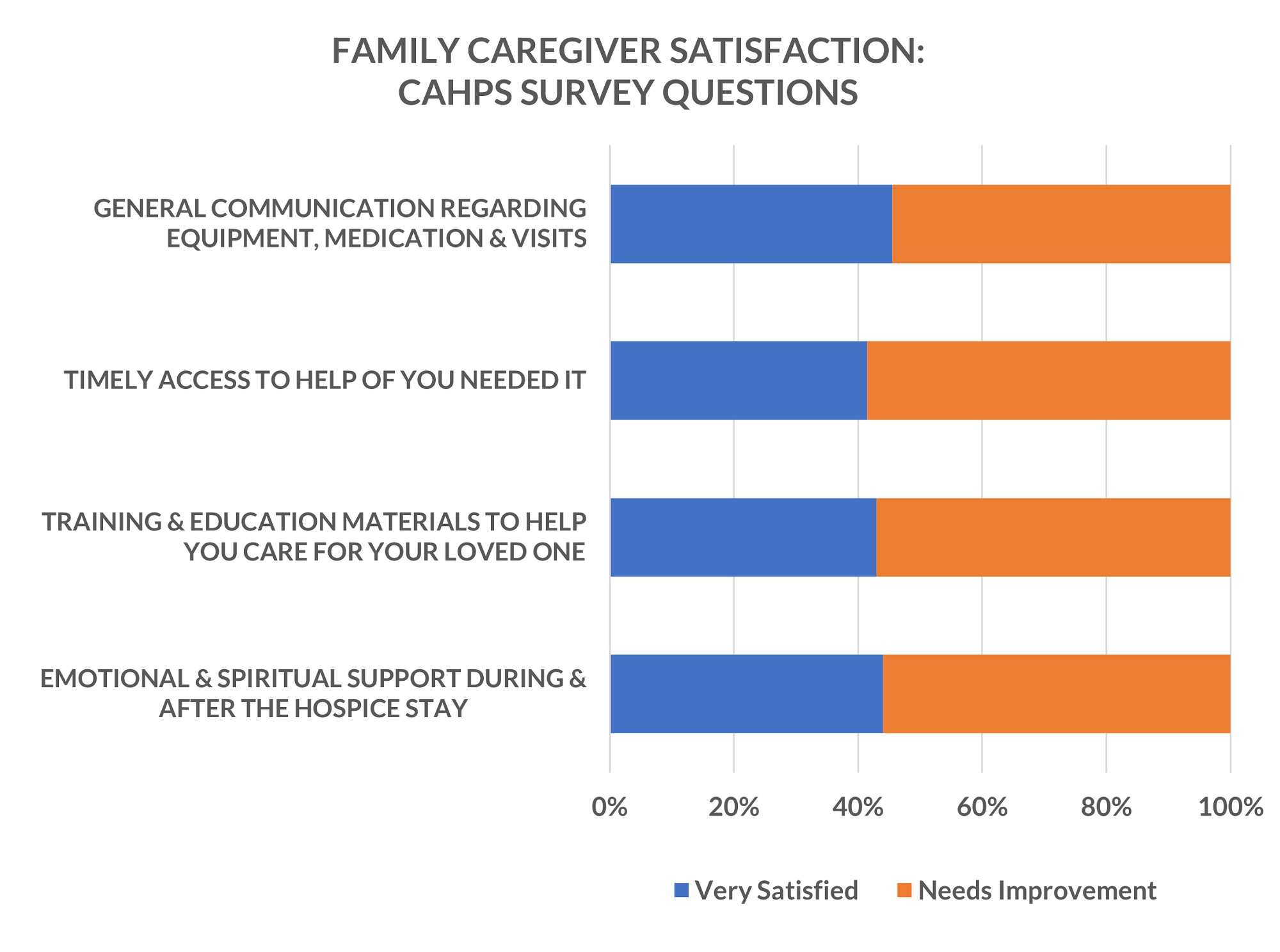
How Current Day Communications are Coming Up Short to Respond to Family Caregivers in Real Time
One family caregiver relayed a story about asking the visiting nurse to help him acquire a hospital bed for his father. To make that happen, it took seven back-and-forth phone calls over two days between the nurse, the case manager, the DME company and the caregiver to finally coordinate a delivery time for the bed. Not only is this inefficient, but it can cause unnecessary grief for the family caregiver and delays care.
The dominant three communications methods: phone, texting and email came up short in their ability to enable hospice clinical teams to immediately respond to urgent family caregiver needs.
Family Caregivers: Always Received Immediate Response To Urgent Need

Communication Challenges: Phone, Text, and Email
Phone
There are several inherent challenges with these communication modalities. Phone, while great when you can reach someone on the first try, often results in missed calls, voicemails and many times requires several calls to accomplish one task because of its linear, one-to-one nature.
Text Messaging
Text messaging, while it may be more “instant” if the right person is reached at the right time is often not secure, leaving the provider at risk for HIPAA violations. In addition, if the text goes unnoticed because the recipient is not looking at the work phone, it will not be escalated to another team member and therefore can be missed.
Email, also not secure, is the least “instant” communication method and given the sheer amount of email sent and received during the day can be easily missed.
Get this research report on how better communications impacts consumers: “Impact of Home Healthcare Provider Communication on Consumer Satisfaction.”
Breaking Down the Barriers of Communications
Eight out of 10 family caregivers indicated that they would:
- choose a hospice, and
- give a hospice better survey scores if they employed more advanced communication technologies that resulted in real-time and two-way communication
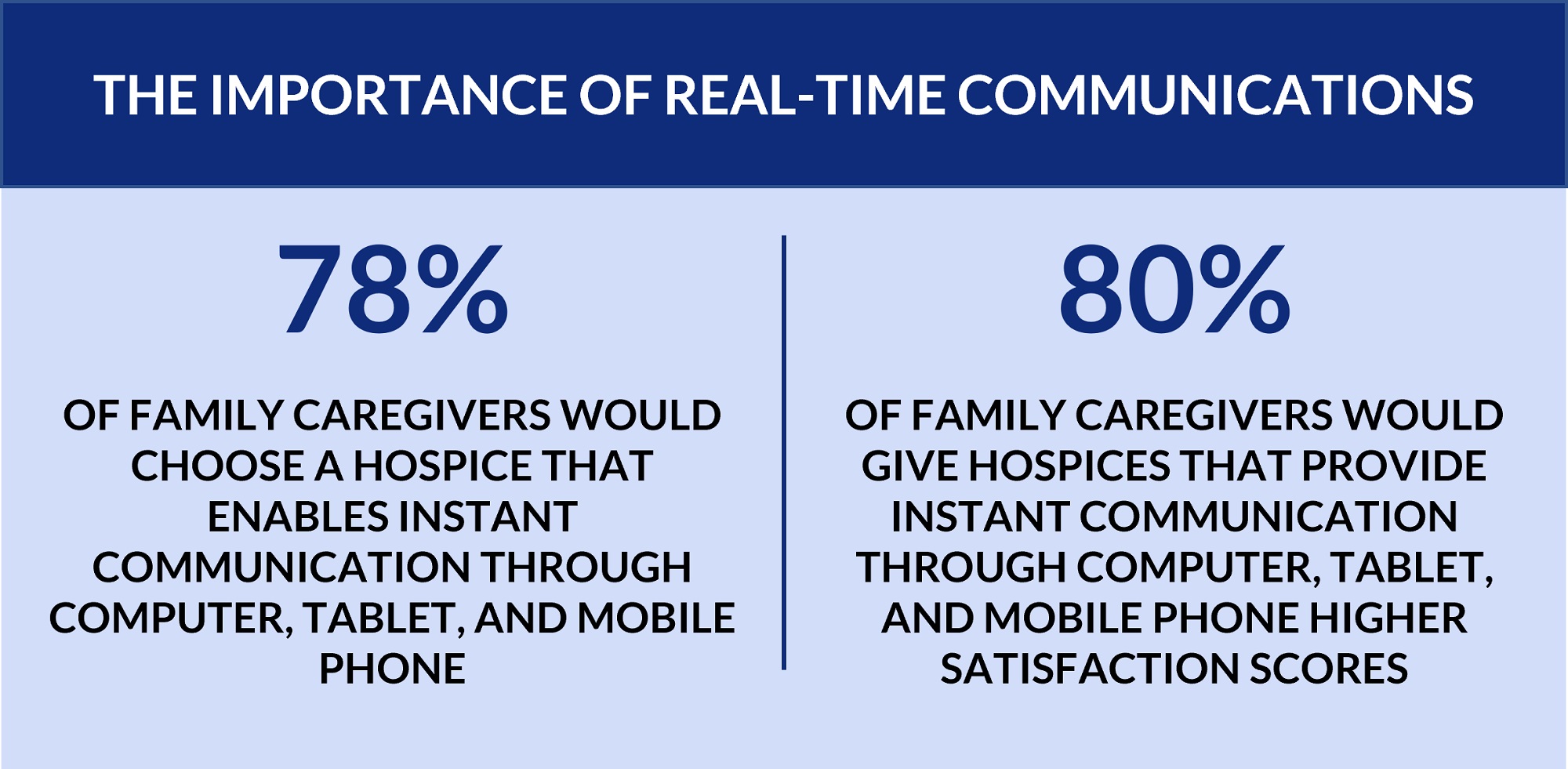
Read this study to learn more about family and clinical team engagement: “Consumer Research Reveals Hospice Communications Strategies Lag Consumer Expectations.”
A Roadmap for Success
5 Ways Your Organization Can Achieve Family Caregiver Communication
1. Being Able to Immediately Receive a Response to an Emergency or Urgent Question
While phone or text are typically used in an emergency, this research shows that family caregivers do not always receive an immediate response. Advanced solutions that are device-agnostic and employ auto-escalation technology to ensure that the appropriate person receives and can immediately respond to an emergency, decrease the likelihood of an unnecessary ER visit or hospitalization and resulting revocation of the hospice benefit
2. Ability to Communicate with Medical Directors
Medical Directors have a ton of responsibility yet very little time; however, family caregivers want more from the relationship. Technology that enables a video “face to face” interaction, rather than text or phone, results in more personal relationship and assurance that the MD is available for the patient.
3. Conducting a Group Chat with the Hospice Nurse and the Entire Family
Communicating with geographically dispersed families is a challenge for hospice clinical staff. Advanced solutions that enable nurses to address the entire family at once in secure message groups facilitate a clear and efficient communication flow, reduce confusion and back-and-forth. The result is less stress on the family caregiver and more time a nurse can spend caring for patients.
4. Coordinating Medication and Equipment Needs
Today’s more sophisticated solutions can instantly connect clinical teams, physicians, DME suppliers, pharmacies, and others to quickly coordinate the order, delivery, and pick-up of these essentials via secure, instant message. The result is less work for the family caregiver and clinical staff and more expedient care for the patient.
5. Knowing About Schedule Changes Such as Nurse or Aide Visits
Family caregivers understand that emergencies happen, and schedules change frequently, but they still need to be in the loop. Solutions that can efficiently alert family caregivers and other care partners to a change in schedule allow these stakeholders to plan their day accordingly and avoid long waits for a nurse or aide. Instead of calling or texting individuals, one quick, group message can alert all critical stakeholders.
Don’t Miss These 4 Valuable Resources
- “12 Secrets to Patient and Family Caregiver Satisfaction in Home Health, Hospice, and Palliative Care.”
- “New Study Reveals Care Team and Family Member Connectivity Gaps in Hospice.”
- “Impact of Home Healthcare Provider Communication on Consumer Satisfaction.”
- “Consumer Research Reveals Hospice Communications Strategies Lag Consumer Expectations.”
